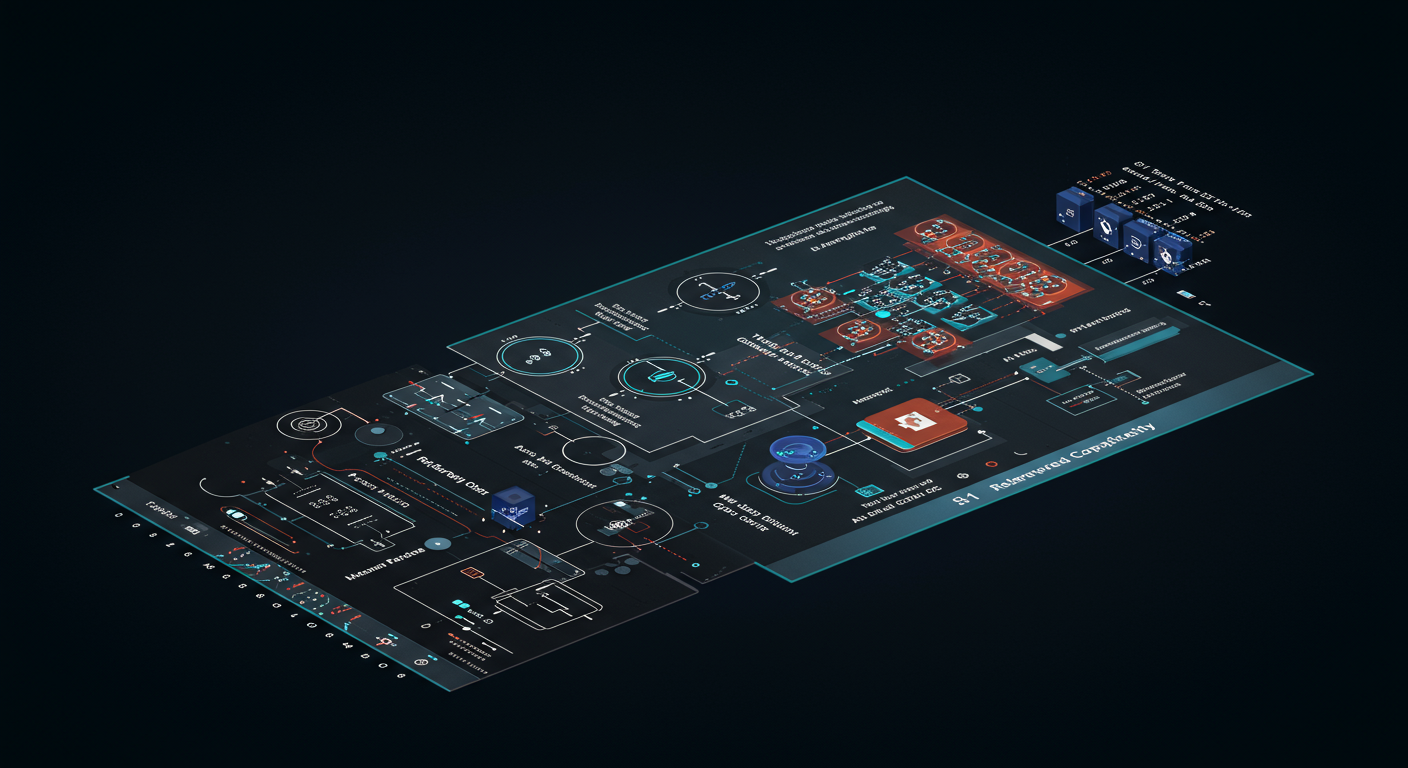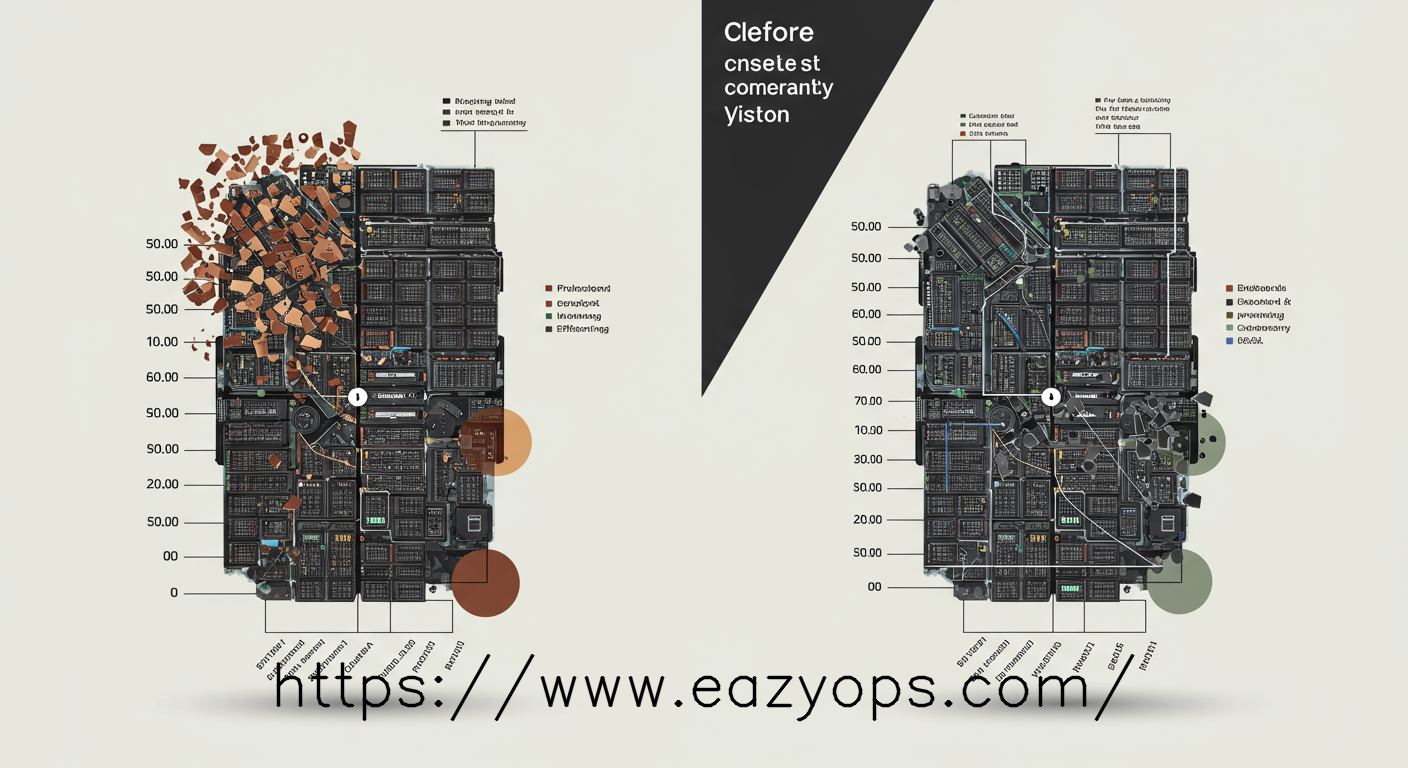GKE System Pods Consuming Excess Capacity: The Hidden Drain on Our Cloud Budget
"Why are our GKE costs creeping up, even with efficient applications?"
It started subtly. A slight upward tick in our monthly GCP bill, specifically in GKE (Google Kubernetes Engine) costs. At first, we attributed it to organic growth, a new feature launch, or maybe just a particularly busy week for our core applications. But as the trend continued, growing from a negligible percentage to a noticeable $1,500 monthly surplus, it became clear something was amiss.
As the lead platform engineer, this fell squarely on my plate. My first instinct was to check our application workloads. Were there runaway deployments? Misconfigured autoscalers? Development environments left running indefinitely? We drilled down into namespaces, analyzed deployment logs, and consulted with development teams. Every indicator pointed to healthy, well-behaved applications, largely within their expected resource consumption envelopes.
The puzzle deepened. Our nodes weren't overstretched, CPU and memory utilization metrics looked reasonable, yet the bill kept climbing. It was like paying an invisible tax. The resources were being consumed somewhere, but our standard monitoring and cost allocation tools weren't pointing to any obvious culprits. This hinted at a deeper, more systemic issue lurking beneath the surface of our managed Kubernetes clusters.
Chasing Ghosts with Traditional FinOps
Our initial attempts to diagnose the problem involved a whirlwind of traditional FinOps strategies. We meticulously reviewed our cluster autoscaler configurations, ensuring nodes weren't spinning up unnecessarily. We revisited our application pod resource requests and limits, tightening them where possible. We even experimented with different machine types for our node pools, hoping to find a more cost-effective balance.
But the costs persisted. The baseline, the "floor" of our GKE spending, remained stubbornly high. This was particularly frustrating because GKE is a managed service. Google takes care of the control plane, patching, and many underlying components. We had always assumed these critical, default elements were inherently optimized.
Our dashboards, which usually provided clear insights into application resource usage, were unhelpful here. They showed aggregate cluster utilization, but couldn't easily dissect the overhead of the "system" components versus our actual workloads. It was like looking at a power meter for an entire building, knowing a specific tenant was overcharging, but having no way to meter their individual consumption.


The 'Aha!' Moment: Unmasking the System Pod Overlords
With application workloads ruled out, my investigation turned to the often-ignored, yet crucial, system components. I started meticulously examining the kube-system, gke-system, and other internal namespaces that house GKE's operational pods. This is where the core functionality of Kubernetes lives: DNS, networking proxies, metrics agents, and various controllers.
What I discovered was a revelation: many of these default system pods, deployed and managed by GKE itself, had incredibly generous (read: over-provisioned) CPU and memory requests and limits. For example, kube-dns might be requesting 200m CPU and 70MB memory, when its actual average usage was a fraction of that – perhaps 20m CPU and 15MB memory.
Here’s the critical part: Kubernetes schedules pods based on their requests. If a pod requests 200m CPU, that amount is reserved for it on a node, even if the pod is only using 20m. When dozens of these system pods across an entire cluster are collectively requesting far more resources than they actually consume, it leads to significant resource fragmentation and wasted capacity. The nodes believe they are more utilized than they actually are, triggering the cluster autoscaler to provision new, expensive nodes prematurely. We were effectively paying for 30% of our cluster capacity to sit idle, reserved by system components that didn't truly need it.
EazyOps: Uncovering the Hidden Resource Hogs
This was a problem too granular and persistent for manual fixes or generic cost management tools. We needed a solution that could delve into the nuances of Kubernetes resource management, understand the implications of requests and limits at a system level, and crucially, provide actionable insights. This is where EazyOps came into play.
EazyOps wasn't just another cost dashboard. Its strength lay in its intelligent analysis engine, which continuously monitors all workloads within a Kubernetes cluster, including the often-opaque system namespaces. It correlates actual resource consumption with configured requests and limits, identifying discrepancies that lead to wasted capacity. Most importantly, it understands the delicate balance required for critical system components.
Unlike generic optimizers that might aggressively recommend lowering limits across the board, EazyOps uses sophisticated algorithms to distinguish between stable, predictable system services and bursty application workloads. It understands that kube-dns might occasionally spike, but its baseline is consistent. This intelligence allowed EazyOps to flag specific system pods in our GKE clusters that were significantly over-provisioned without risking the stability or performance of the cluster.


From Waste to Efficiency: EazyOps Right-Sizing GKE's Core
EazyOps provided a detailed breakdown of the offending system pods and their recommended resource configurations. It wasn't just about identifying the problem; it was about providing an actionable, safe path to resolution. Here’s how EazyOps helped us tackle this:
- Granular Visibility: EazyOps presented a clear view of resource consumption for every pod, including those within
kube-systemandgke-systemnamespaces, which were largely hidden from our existing tools. - Intelligent Recommendations: Based on historical usage patterns and GKE's operational requirements, EazyOps suggested optimized
requestsandlimitsfor pods likekube-dns,gke-metrics-agent,gke-metadata-server, and thegke-ingresscontroller. The recommendations were conservative enough to ensure stability but aggressive enough to yield significant savings. - Safe Implementation Path: EazyOps provided the exact YAML manifests with updated resource configurations, making it straightforward to apply these changes. We implemented these changes incrementally, monitoring each step to ensure no adverse impact on cluster performance.
- Continuous Monitoring: Post-optimization, EazyOps continued to monitor the system pods, ensuring that the new
requestsandlimitsremained appropriate and flagging any new inefficiencies or potential resource contention.
The impact was almost immediate. As we applied the EazyOps recommendations, the Kubernetes scheduler could pack pods more efficiently onto existing nodes. The cluster autoscaler, no longer deceived by overly generous system pod reservations, scaled down unnecessary nodes.
The Tangible Results: Reclaiming Wasted Capacity and Dollars
Six weeks after deploying EazyOps and acting on its recommendations, the change in our GKE cost profile was undeniable:
Cost Optimization:
- $1,500 monthly savings: A direct recovery of previously wasted budget, totaling $18,000 annually.
- 30% capacity recovery: The percentage of cluster resources freed up from over-provisioned system pods.
- Reduced node count: Our cluster autoscaler now runs more efficiently, maintaining fewer idle nodes.
Operational Efficiency:
- Improved scheduling: Application pods now have more immediate access to requested resources.
- Proactive alerts: EazyOps provides early warnings for potential resource contention or new over-provisioning.
- Reduced investigative time: No more chasing invisible costs; EazyOps pinpoints issues instantly.
Strategic Impact:
- Increased confidence: Trust in our GKE cost management, knowing system components are optimized.
- Budget reallocation: Freed-up funds can now be invested in innovation, not waste.
- Sustainable growth: Our GKE environment is now better prepared for future scaling without spiraling costs.
This wasn't just about saving money; it was about gaining a deeper understanding and control over our cloud infrastructure. It was about turning a vague, persistent cost problem into a tangible, solvable one.
Lessons Learned: The Unsung Heroes of Cloud FinOps
Our journey to uncover and resolve the GKE system pod over-provisioning taught us invaluable lessons about cloud cost management, particularly within managed Kubernetes environments:
- Don't trust defaults blindly: Even managed services with "default" configurations can harbor significant inefficiencies. Always verify and optimize.
- System pods matter: The collective resource
requestsof system components can account for a substantial portion of your cluster's capacity and cost. They are not merely background noise. - Requests vs. Limits is crucial: Understanding the difference between a pod's requested resources (which dictate scheduling) and its actual usage is paramount for efficient capacity planning and cost control.
- Specialized tooling is essential: Generic cloud cost management tools often lack the Kubernetes-native insight needed to identify and address issues at the pod, container, and
requests/limitslevel, especially for system workloads. - FinOps is continuous: Optimization isn't a one-time task. Clusters are dynamic environments, and continuous monitoring and right-sizing are critical for sustained efficiency.
What's Next: Building Truly Efficient GKE Environments
The success we achieved by optimizing GKE system pods with EazyOps is just one piece of the puzzle. The future of cloud cost optimization in Kubernetes involves a more holistic and proactive approach:
- Proactive anomaly detection: Leveraging AI/ML to detect subtle cost increases or inefficiencies before they become significant problems.
- Automated guardrails: Implementing policies that prevent over-provisioning in the first place, or automatically right-size workloads based on observed behavior.
- Cost-aware cluster design: Integrating FinOps principles from the very inception of new GKE clusters and node pools.
- Integration with CI/CD: Shifting left on cost optimization by incorporating resource efficiency checks directly into the development and deployment pipelines.
At EazyOps, we're committed to helping organizations navigate the complexities of cloud cost management, especially in dynamic environments like GKE. Our mission is to transform hidden costs into reclaimed capacity, allowing engineering teams to focus on innovation rather than unexpected budget drains.
Because in the cloud, true efficiency isn't just about running lean; it's about running smart, ensuring every dollar spent contributes directly to business value.
About Shujat
Shujat is a Senior Backend Engineer at EazyOps, working at the intersection of performance engineering, cloud cost optimization, and AI infrastructure. He writes to share practical strategies for building efficient, intelligent systems.